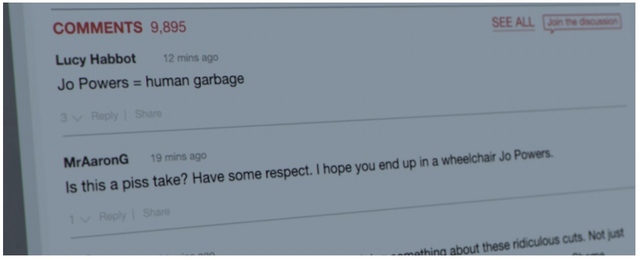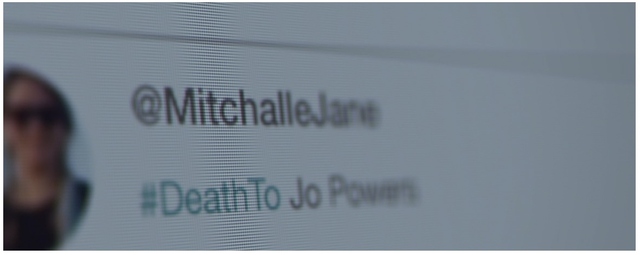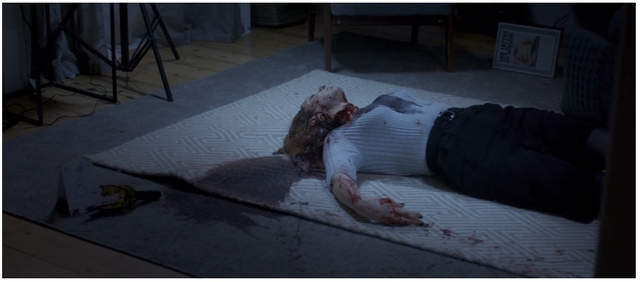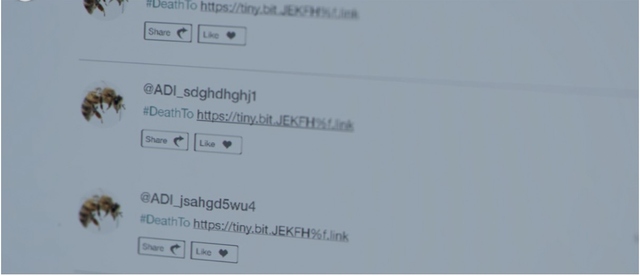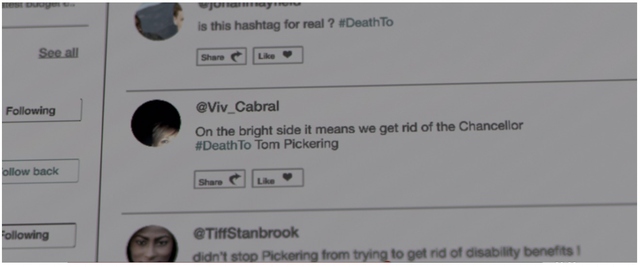Hyperreality and the Consumption of the Subject as Object in Black Mirror
By
2019, Vol. 11 No. 10 | pg. 1/1
KEYWORDS:
Jean Baudrillard’s essay ‘The Precession of Simulacra’ from Simulacra and Simulation (1981) is a key postmodern text to understanding the contemporary technological Western world. ‘The Precession of Simulacra’ explores Baudrillard’s central concepts of simulacra, simulation and hyperreality. Baudrillard argues that we now live in a world of signs, that ‘just about everything is a matter of signification, […] obviously connected with an explosive growth in media, but related also to changes in the conduct of everyday life’.1 In ‘The Precession of Simulacra’, Baudrillard laments the onslaught of television, media growth and the constant bombardment of images intended to represent reality. Since ‘The Precession of Simulacra’ was published, we can only add more examples of the contemporary obsession with signs and images, such as user’s addiction to social media, mobile phone app’s, instant messaging, Netflix and the proliferation of streaming services, to name but a few. Now more than ever we live in a postmodern world dominated by images and signs. In this essay, I will use Baudrillard’s ‘Precession of Simulacra’ to discuss the episode ‘Hated in the Nation’ (2016) from the television series Black Mirror (2011-present). This text offers a representation of social media to critically engage with philosophical questions of subjectivity and reality in the contemporary, postmodern technological Western world. This essay will argue that the subject is fragmented and decentred in hyperreality and becomes an object to be consumed by the public. First, I will briefly explain Baudrillard’s theory, I will then apply the theory to ‘Hated in the Nation’ and explore how the text presents modern technology as hyperreal products by conveying phones and social media platforms as more real than ‘reality itself’.2 I will also consider what the consequences of hyperreality might be for the human subject. I will demonstrate that ‘Hated in the Nation’ invites an examination of the consumption of death as spectacle through hyperreal media. This essay will ultimately argue that hyperreality leads the subject to be reduced to a signifier or an image to be consumed by other users of social media. Baudrillard’s concept of ‘simulacra’ refers to ‘copies without an original’, which Baudrillard uses to explain the lack of depth, meaning or ‘real’ behind signs which penetrate our technological lives.3 Frank Webster gives the example of when a user downloads ‘a tune to your iPod, the notion of an original is meaningless’ as the song that has been downloaded has no physical original, it is a copy of a song downloaded from a digital platform.4 Walter Benjamin, as early as 1936, argued that ‘the presence of the original is the prerequisite to the concept of authenticity’, as he argues authenticity is missing from a world of mass-produced commodities.5 Thus, no original in a culture of mass production equates to what Baudrillard will concretise as simulacra. Baudrillard’s term ‘simulation’ refers to the idea of creating a reality, but it is a reproduced reality based on the simulacra of signs. Simulated reality appears so real, however, that one cannot separate the ‘real’ from simulation. Simulation, in fact, dominates the real, ‘never again will the real have the chance to produce itself’, because simulation is all there is.6 Thus, simulation precedes the real. Baudrillard’s ‘hyperreality’ refers to a simulation of reality that acts as more real than the real, or a created heightened reality.Steven Connor summarises Baudrillard’s concepts of simulacra, simulation and hyperreality succinctly as he states, ‘all of contemporary life has been dismantled and reproduced in scrupulous facsimile’ which refers to simulacra and simulation: the reproduction of signs of reality that are in fact a created ‘facsimile’. 7 Connor then discusses how the simulation of ‘the real and referential’ then ‘takes the form’ of ‘manufactured objects and experiences which attempt to be more real than reality itself’ which he states explicitly is what Baudrillard calls the ‘hyperreal’.8 Baudrillard uses television as an example of this ‘manufactured object’ that produces hyperreality.9 However, we might consider social media as a hyperreal experience and mobile phones as hyperreal objects which act as more real than the real. Facebook, as an example of social media, markets itself as a connecting tool; a user posts updates of their life to their friends, who can react and comment as they wish. This platform acts as a digital reproduction of real life, a heightened version of real communication between friends, but it does not reflect real life interaction. This is the hyperreal, a digital simulation of reality, where a user ultimately uses Facebook to form an online identity and persona more vivid than ‘the real’ self. Theories of the postmodern and science fiction texts are argued to go hand in hand by some critics and theorists. Brian McHale suggests that ‘science fiction increasingly proves to be a genre that is necessary to grasp the postmodern world around us’.10 Baudrillard himself writes in ‘Simulacra and Science Fiction’ that science fiction ‘is no longer anywhere, and it is everywhere, in the […] here and now, in the very principle of the surrounding simulation’.11 Therefore, Baudrillard argues science fiction is hardly fictional at all, it is merely waiting ‘in its crude state’, to emerge. 12 Gerald Alva Miller Jr. states that this wait is over, that the technology of contemporary science fiction now ‘occur[s] in realistically depicted versions of the present or even the past […] yet they still concern the growth of technology in a manner akin to science fiction’.13 ‘Hated in the Nation’ is one such contemporary text. Set in the extremely near-future, investigating technology already at our fingertips, ‘Hated in the Nation’ argues for the need to investigate ‘the way technologies are used’ and the effect of technology on the subject in cyberspace.14 ‘Hated in the Nation’ is an episode directed by James Hawes for Charlie Brooker’s television series Black Mirror. Black Mirror, now in its fourth season, is an anthology series comprised of stand-alone episodes with the theme of technology as its connecting feature. ‘Hated in the Nation’ follows Detective Karin Parke and her new partner Blue Coulson who, together with the help ofNational Crime Agencyofficer, Shaun Li, try to solve the deaths of people who were all targets ofsocial media hate. The episode begins at the end of the story, with Parke attending a court hearing. The judge tells us the events happened in May, and the scene changes to May 15th at the beginning of the story. We watch Parke enter her home and turn on her television to watch the news, and we learn that the Chancellor, Tom Pickering, has defended cuts to welfare funds. We also learn that there is a controversial opinion article writer, Jo Powers, who has written on the topic of welfare cuts and has cruelly dismissed the death of a well-loved disability activist, Gwen Margery Rose. The news reporter then announces that it is the second summer using ADI robotic bees. This information simultaneously indicates the text as near-future science fiction, but also becomes integral to the narrative, as will be explained later. After we see Parke watching the news, we meet Powers. As she walks down the street, people glare at her or verbally insult her. Whilst walking home she checks her phone to see she has eighty-six ‘new mentions’ on social media. When home she logs into Twitter and goes to see the comments under her article. We see the extent of the online abuse she receives, as shown in figure one. Figure 1: The comments under Powers' article The camera dedicates just over half the screen time lingering on different comments such as those in figure one in a minute-long scene. We watch Powers laugh uneasily at the streaming comments and she cannot seem to stop looking at her computer screen. At this stage, it is crucial to note the number of media references that have been incorporated into the episode already. Through the television news that Parke watches, the viewer learns about the world we are watching. We then meet Powers, and we are continually shown comments on her online article page and her Twitter mentions, depicted on her phone and computer, which are used to show the viewer the extent to which she is hated. The episode, only seven minutes in, is saturated with television and online media. The television news functions as a Baudrillardian hyperreal experience that conveys reality to the viewer. The online Twitter forum that we see Powers scroll through is also a hyperreal reality as Powers obsessively immerses herself in front of her computer screen. Murphie and Potts consider Baudrillard and how the internet contributes to the production of simulations:
This analysis of postmodern living is incredibly relevant to ‘Hated in the Nation’ as it points out how simulation supersedes ‘real’ interaction. Andrew Murphie and John Potts imply that the media can never convey the ‘real’ and with the ever-increasing reliance on the internet, simulations are only becoming more prevalent, thus, reiterating how the hyperreal erases and dominates the ‘real’. In this hyperreal cyberspace, signs for consumption are constantly in production, and this creates a new reality, a technological sublime, as ‘virtual reality cannot be completely known’ because it is a ‘space that isn’t space’.16 Twitter is hyperreal as it bears no reflection to ‘real’ life and creates a sublime cyberspace where a user, once a ‘rational subject, [… becomes] radically decentred in online communication as subjectivity becomes detached from materially fixed, embodied contexts and is dispersed and multiplied continuously through digitisation’.17 In the hyperreal, Powers is erased as a ‘real’ human being and is re-signified as ‘human garbage’ (as shown in figure one) for Twitter users to consume. Arthur Kroker writes that the technological West lives ‘in the empty space of virtuality. We are the first (electronic) inhabitants of the universe of pure symbolic media exchange’.18 Applying this to Twitter as represented in ‘Hated in the Nation’, this suggests that Powers becomes a disembodied sign for consumption in the symbolic exchange of cyberspace. However, the ‘empty space’ that Kroker states we live in can be identified as a hyperreal sublime cyberspace. The ‘pure symbolic media exchange’ of cyber interactivity is understood by postmodern critics as the opposite of social.19 The subject does not experience ‘increased interactivity’, but experiences ‘death’.20 Interaction dies in this hyperreal cyberspace and becomes merely a simulation of communication. Barnett describes how ‘chat rooms provide users with the opportunity to function as floating signifiers capable of becoming anything that is describable’.21 Thus, online, communication is replaced by sign consumption, and subjects become merely ‘floating signifiers’.22 If we replace ‘chat rooms’ with Twitter, we may conclude that Powers becomes a signifier of hatred. Figure 2: The viewer's first encounter with the #DeathTo hashtag In figure two, we see the #DeathTo hashtag being used for the first time. It is only shown for one second, one comment among thousands, but it is a hint to the viewer. The composition of the shot, foregrounding the ‘#DeathTo’ and blurring the other words into the background, highlights the significance of the hashtag as the important feature of the Tweet. This death wish becomes real as Powers is found murdered in the immediately following scene. Figure 3: Power's brutalised body In ‘Hated in the Nation’, online threats become ‘real’ as the subjectivity of Powers disappears in the hyperreal. She is decentered, the distinction between Powers as ‘real’ and Powers as a sign is broken down, and this creates a hyperreal implosion of meaning. What ‘Hated in the Nation’ represents is what happens when the decentred postmodern subject is punished through cyber-attacks (hate messages on mass) and additionally through severe bodily torture as presented in figure three. Powers moves from subject to a sign (a cyberspace symbol of hatred), to a murdered subject. Power’s subjectivity is killed through the decentralisation of her subject-hood through Twitter, and her physical body is punished for her actions in the digital hyperreal. ‘Hated in the Nation’ additionally literalises how the hyperreal precedes the real, thus, actions in the hyperreal hold consequences in the ‘real’. Parke contends that Powers was killed by her husband, whilst Coulson argues that it could be a member of the public that hates her. Parke attempts to maintain a ‘real’ worldview. She explicitly states that murder is committed through real emotion, like in a marriage, she suggests, as opposed to the online ‘half hate’ who ‘don’t mean it’.23 To her, hatred expressed online is not ‘real’ but is simulated emotion. We learn Coulson worked in digital forensics before moving to detective work. Originally her job was to hack phones to track violent criminals such as murderers and sex offenders. Coulson argues that phones ‘absorb who we are. They know everything about us’.24 This line suggests the phone is a hyperreal product, a product of pure simulation society which acts almost as an extension onto ourselves. Astra Taylor explains the ways that ‘big media’, through search engine algorithms and data collecting, can ‘absorb who we are’ in the way that Coulson warns: ‘by gathering detailed demographic information (who we are), geographic information (where we are), behavioural information (how we act), and social information (who we know), companies compile highly detailed dossiers’ which can be accessed by a number of corporations.25 Coulson’s comment on how mobile phones absorb who we are echo Taylor’s real-world analysis. Thus, ‘Hated in the Nation’ as science fiction reinforces McHale’s and Baudrillard’s respective argument’s that science fiction is a genre that is necessary to understand ‘this universal simulation that [has] become for us the so-called real world’.26 Whilst this text is set in the near future, the mobile phones which ‘absorb’ our information, that are hyperreal products, are not so futuristic. Coulson suggests that she attempted to escape pure hyperreality by moving to detective work as she feels ‘out here in the real world, you can genuinely prevent something’.27 The idea of the ‘real world’ versus hyperreality calls to mind Baudrillard’s successive stages of the image. In Baudrillard’s argument, we have moved from the ability to reflect our reality in a truthful way, to the ability to mask and distort this reality, to masking the simulated reality, and finally, to the stage where simulation asserts precedence over reality.28 Coulson hopes to find a ‘real’ beneath the technological reality. She sees the technological as a representation that ‘masks and denatures a profound reality’, and she wants to return to this reality.29 However, Coulson is continually drawn back into the digital world and comes to accept that a return to the real is not possible, and that simulation precedes the real. The day after Powers is killed, a rapper named Tusk dies following a hoard of internet abuse towards him after he publicly shames a nine-year-old fan. Both autopsies show an ADI bee has buried itself in each victim’s brain at the pain centre causing excruciating agony. Thus, the deaths become linked by the social media hate that each victim received, proving Coulson to be correct. Parke’s ‘real world’, which she believes is distinct from the digital, is shown to be one hyperreality.30 And Coulson, out in the ‘real world’, is drawn back to investigating the crimes committed in the hyperreal, again, proving to both characters that there is only hyperreality left.31 Park and Coulson investigate Granular, the company that created the ADI bees, and we learn that the ADI bees must have been hacked. Coulson uses her digital forensics skills on Twitter and links the deaths to the increasingly popular #DeathTo hashtag. She manages to find the source of the hashtag which originates from several bot accounts. Figure 4: The #DeathTo bot accounts As presented in figure four, the bot account’s avatar picture is a bee. Whilst this is intended to reference the ADI bees, the weapon of death, it evokes imagery of pollination and nature. This could be read either as the bot account’s pollinating the hashtag for it to fertilise and grow, but also the image of the bee can be read as a signifier of nature. This reading highlights the sharp contrast between nature and technology and becomes an icon for the lost real in hyperreality. It is a stark reminder of the loss of real bees in this world, where simulated bees are all that are left. Significantly, the bot accounts mean the origin of the #DeathTo hashtag is a simulacrum; a continuation of copies (copies of Tweets) with no original. There is no one original account that has created the hashtag, it has been automated, and this automation produces a series of symbols for Twitter users to exchange. Baudrillard states that ‘representation stems from the principle of the equivalence of the sign and of the real’ but simulation ‘envelops the whole edifice of representation itself as a simulacrum’.32 Therefore, the concept of a real underneath simulation relies on the principle of the real, thus, the idea of a real behind Twitter relies on an independent human operating each Twitter account. Here there is none. Taylor points out how the internet is a simulacrum creator, highlighting the need for symbolic exchange in cyberspace. Taylor calls the internet, ‘a copy making machine, a place where replicating things and passing them along are effortless and essential’.33 These Tweets are a continuation of simulacra made to generate recognition of the #DeathTo hashtag and encourage others to partake; thus, the pure symbolic exchange of hyperreality. The #DeathTo hashtag is a simulacrum which has been consumed, reproduced and exchanged by the Twitter users, regardless of the real meaning behind the hashtag. The link on the Tweets takes Coulson and Parke to a ‘game of consequences’ video.34 The video explains the rules of the Twitter hashtag ‘game’.35 To partake, a Twitter user must pick a target, post their name and photo, attach the ‘#DeathTo’, and at five o’ clock the most popular target will be ‘eliminated’.36 The end of the video explains that the clock resets at midnight. After another victim, Clara Meades, dies, the cause of death of Powers, Tusk and Meades are broadcast to the public, and the connection of the deaths to the Twitter hashtag is revealed. The sequence in the episode reporting the deaths is comprised of fast cut editing of different media sources, including television news, radio show clips and social media platforms. This sequence resonates with some of Baudrillard’s more recent work discussing terrorism in the context of the 2001 September 11th terror attacks in New York. He argues that terror acts as a sign of reality, and is an attempt to attack and destabilise the hyperreal West. He argues that terrorism in hyperreal society is digested through technological mediums and is experienced ‘as [an] “image-event.” The image takes the event “hostage”; it “consumes the event,” and […] “offers it for consumption”’.37 The terrorist event cannot be understood by the technological West unless it is reproduced in the media and digested through digitised information. The section of the episode where the deaths are linked to the #DeathTo hashtag is only composed of media platforms discussing the hashtag. The event is experienced as an ‘image event’ and consumed through symbolic exchange.38 The image precedes the real and the tragedy of death is devoured in information. One way that information has absorbed the event of death is shown through the television news and how it capitalises on the terror of the hashtag by offering a live stream of who may be next. Figure 5: A news station showing the top five targets Figure five shows a news station which is live streaming the top five targets up for ‘elimination’.39 The #DeathTo hashtag has been reproduced in television media and inadvertently encourages further engagement with the hashtag by offering five contestants for the Twitter users to choose from. These subjects are in the process of being recoded as signifiers of hatred for the audience to consume as each person’s wrongdoing is highlighted by the news, justifying their place in the top five. Their potential death becomes a spectacle for entertainment and further perpetuates the use of the #DeathTo hashtag on Twitter. Figure 6: Further engagement with the #DeathTo hashtag
Figure six shows the continuing engagement with the hashtag and the consequences of the television news highlighting Pickering’s place as number one target. This production of a media scandal operates in the same way that Baudrillard states that the Watergate scandal was ‘a simulation of scandal for regenerative ends’.40 Baudrillard argues that the Watergate scandal was a mere simulation to provoke a scandal, and hence, a sign of reality to consume. Likewise, this ‘#DeathTo’ scandal becomes a sign of reality for consumption, and the victim’s deaths are re-consumed by media as a hyperreal symbolic death. The victims become a literal and gruesome depiction of Fredric Jameson’s death of the subject, or ‘the end of individualism’ where the subject is not an autonomous subject but only a reflection of late-capitalism.41 ‘Hated in the Nation’ conveys how Powers in life was consumed as ‘human garbage’ in cyberspace, killed in the ‘real’, and how her death is then re-consumed by the media. She is reduced to a sign for symbolic exchange in cyberspace, a reflection of media capitalism. The next victim of #DeathTo is discussed in this media section as we hear radio discussions debate those who may deserve to die, one caller stating: ‘my point is, someone is gonna be top of the list yea? So why not make it someone who deserves it? Like racists or a child killer’.42 This comment implies that the #DeathTo hashtag may function as a moral cleansing device and questions who may be deserving. We hear a TV talk show guest state that ‘people know they can jump on board because nobody will ever know if they did or didn’t’ which addresses the episode’s theme of liability and guilt in the context of hyperreality.43 The consequences of the #DeathTo hashtag are real yet users appear to feel that they are not guilty of anything because ‘nobody will ever know’ if they took part. Additionally, users do not experience any physical involvement of the consequences, therefore, it does not feel ‘real’. For example, users who Tweeted for the death of Powers did not see the violence of her death, as shown in figure three. Furthermore, Suzi Mirgani analyses terrorism in contemporary American society, and points out that ‘the anonymity afforded by digital media platforms has served to complicate discernible divides between terrorists, their supporters, policing authorities, and inquisitive members of the public’.44 The question of who is liable for the deaths - the creator of the hashtag, those who vote, or the victims for doing wrong - is difficult to answer. Subjects online are decentred and identities become fragmented and confused. The anonymity of cyberspace further complicates how decentred subjects communicate in symbolic exchange. The line between perpetrators, sympathisers, authority figures and the public are blurred to their fullest extent in ‘Hated in the Nation’, as the public become the perpetrators themselves. The response to death by absorbing it into media content further concretises this society in hyperreality. Baudrillard, in his essay ‘The Ecstasy of Communication’, explains that Western technological society revels in the over-exposure to images. He defines this visual overstimulation as obscene, which is when ‘everything is exposed to the harsh and inexorable light of information and communication’.45 The consumption of terror through Baudrillard’s ‘ecstasy of communication’ is conveyed in ‘Hated in the Nation’ by showing how hyperreal media machines perpetuate rather than eliminate the violence. 46 The violence is disconnected from the ‘real’ world destruction and is recoded in cyberspace as signs and images to be consumed. The actual death as a tragic event is eliminated, and the event is surrendered to the media representations of it. Coulson and Parke discover that it is a former Granular worker, Garrett Scholes, who is the #DeathTo hashtag creator and hacker of the ADI bees. They find a document inside one of the ADI’s that contains his motivations through a written manifesto. Parke and Coulson read several parts of the manifesto, where:
Scholes’s manifesto could almost be directly referencing Baudrillard’s lamentations on television which he calls ‘a viral, endemic’, an illness, whilst Scholes argues that Western technological society is weak, bearing connotations of illness.48 However, Baudrillard sees ‘radical action, such as the destruction of the system, [as] no longer a real possibility’.49 He does, controversially, see terrorism as a way to subvert hyperreality.50 He believes the modern terrorist responds to the ‘Western regime of image proliferation, sign exchange, and spectacle’ and responds with ‘an equally hyperreal act […] the primary goal of the terrorist in media spectacle, “the only language the West understands”’.51 Scholes echoes this as he uses the very technology he is critiquing and relies on this society to reproduce the death in media spectacle, which it does. He is attacking a hyperreality through hyperreal means, using the hyperreal symbolic exchange machine against itself. He believes that humanity must account for its actions but knows that he must use the ‘language’ of the people he wants to critique. Reading Scholes through the lens of a Baudrillardian terrorist is useful to understand how hyperreal media consumes the event of death and offers it as a media spectacle, and how Scholes uses this system against itself to achieve his goal of displaying the immorality of consuming death as a media spectacle. Whilst the episode is not representing terrorism as we understand it, a form of the spectacle of violence is represented here that bears some relation to our understanding of post-9/11 terrorism. The episode comes to a tragic end when the police find Scholes’s hideout. They discover Scholes’ hard drive, which contains a list of IMEI numbers, a unique number a phone is registered to, and an activation code which appears to shut down the ADI’s. Coulson and Parke try to figure out if the real targets are not the Twitter users themselves. Before they have time to consider their actions, however, Li activates the code. This instructs the ADI’s to kill everyone who Tweeted ‘#DeathTo’. The viewer watches the massive onslaught of the bees which kill thousands of people. The end of the episode returns to Parke’s court hearing from the beginning of the episode. We learn that Scholes escaped and that Coulson is on a private mission to bring him to justice. However, the episode ends with a warning about buying into hyperreality as the real victims are those who perpetuated the violence by engaging with the #DeathTo hashtag. Marleen S. Barr discusses the concept of ‘post postmodernism’ which explores ‘the hitherto science fictional impact of technology […] on society and culture […] when what was once science fictional comprises the very definition of reality’.52 This concept is useful to consider as ‘Hated in the Nation’ is explicitly about the science fictional impact of social media and the consequences of buying into hyperreality. The viewer is asked to reflect on their own actions in cyberspace, as the hyperreality presented here is similar to our ‘real’ hyperreality in which we live. The morality of hyperreality is attacked in this episode as it critiques the consumption of death as a spectacle and represents the consequences of being an online decentred subject. Cyberspace becomes a space of pure symbolic exchange where humanity disappears and subjects become nothing more than a sign or image to be consumed. To conclude, ‘Hated in the Nation’ represents social media as a harmful technology where the human subject is reduced to a mere sign for consumption. This consumption of a person is represented as reducing a subject to a mere symbol to exchange, and that even the event of death is consumed by hyperreal media. Texts like Black Mirror work to expose the impact of ‘the way technologies are used’ in cyberspace where the subject is reduced to an image or a sign to be consumed.53 Dehumanisation in the media, or reducing the subject to the object, happens in hyperreality but is perpetuated by the Twitter users who are still human beings themselves. ‘Hated in the Nation’ draws attention to the need to see the human behind the image, see the subject behind the object, and re-humanise the subject in cyberspace. ReferencesBarnett, P. Chad, 'Reviving Cyberpunk: (Re)constructing the Subject and Mapping Cyberspace in the Wachowski Brothers' Film the Matrix',Extrapolation, 41.4, (2000), 359-374, in [accessed 9 March 2018] Barr, Marleen S., 'Science Fiction and the Cultural Logic of Early Post Postmodernism',Socialism and Democracy, 20.3, (2006), 167-186, in<10.1080/08854300600950285> [accessed 25 January 2018] Baudrillard, Jean, ‘Chapter 15: The Ecstasy of Communication’,inScience Fiction and Cultural Theory a Reader, trans. by John Johnson, ed. by Sherryl Vint (Oxford: Routledge, 2016) Baudrillard, Jean,Simulacra and Simulation, trans. by Sheila Faria Glaser (Ann Arbor: The University of Michigan Press, 1994) Benjamin, Walter, ‘The Work of Art in the Age of Mechanical Reproduction’, UCLA School of Theater, Film and Television, trans. by Harry Zohn, ed. by Hannah Arendt (New York: Schocken/Random House, 2005) Sourced [accessed 24 March 2018] Connor, Steven,Postmodernist Culture: An Introduction to Theories of the Contemporary(Oxford: Blackwell Publishers, 1995) Constable, Catherine, 'Baudrillardian Revolutions: Repetition and Radical Intervention in the Matrix Trilogy', inThe Matrix Trilogy: Cyberpunk Reloaded, ed. by Stacy Gillis (London: Wallflower Press, 2005) Dahlberg, Pots-Doctoral Fellow Lincoln, 'The Habermasian Public Sphere Encounters Cyber- Reality',Javnost - The Public Journal of the European Institute for Communication and Culture, 8.3, (2001), 83-96, in [accessed 9 March 2018] Hated in the Nation (Black Mirror: Series 3, Episode 6), (London: Netflix, 21 October 2016) Jameson, Fredric, ‘Postmodernism and Consumer Society’, inThe Norton Anthology of Theory and Criticism, ed. by Vincent B. Leitch and others (New York: Norton, W.W & Company, 2010) Miller Jr.,Gerald Alva, 'Introduction: The Genre of the Non-Place: Science Fiction as Critical Theory', inExploring the Limits of the Human through Science Fiction, ed. by Gerald Alva Miller Jr. (New York: Palgrave Macmillan, 2012) Mirgani,Suzi, Target Markets - International Terrorism Meets Global Capitalism in the Mall(Germany: Bielefeld Verlag, 2017), in Knowledge Unlatched, [accessed 11 February 2018] Murphie, Andrew and John Potts, Culture and Technology (Hampshire: Palgrave Macmillan, 2003) Taylor, Astra,The People's Platform: Taking Back Power and Culture in the Digital Age(London: Fourth Estate, 2014) Webster, Frank,Theories of the Information Society, 3rd edn (Oxford: Routledge, 2006) Wilcox, Leonard, 'Terrorism and Art: Don DeLillo's Mao II and Jean Baudrillard's The Spirit of Terrorism',Mosaic, 39.2, (2006), 89-105, in [accessed 20 February 2018] Endnotes1.) Frank Webster,Theories of the Information Society, 3rd edn (Oxford: Routledge, 2006)., p. 244. 2.) Steven Connor,Postmodernist Culture: An Introduction to Theories of the Contemporary(Oxford: Blackwell Publishers, 1995)., p. 57. 3.) Webster, p. 249. 4.) Ibid, p. 249. 5.) Walter Benjamin, ‘The Work of Art in the Age of Mechanical Reproduction’, UCLA School of Theater, Film and Television, trans. by Harry Zohn, ed. by Hannah Arendt (New York: Schocken/Random House, 2005) Sourced [accessed 24 March 2018]. 6.) Jean Baudrillard,Simulacra and Simulation, trans. by Sheila Faria Glaser (Ann Arbor: The University of Michigan Press, 1994)., p. 2. 7.) Connor, p. 56. 8.) Ibid, pp. 56-57. 9.) Ibid, p. 57. 10.) Gerald Alva Miller Jr., 'Introduction: The Genre of the Non-Place: Science Fiction as Critical Theory', inExploring the Limits of the Human through Science Fiction, ed. by Gerald Alva Miller Jr. (New York: Palgrave Macmillan, 2012)., p. 7. 11.) Ibid, p. 126. 12.) Ibid, p. 126. 13.) Ibid, p. 12. 14.) Andrew Murphie and John Potts, Culture and Technology (Hampshire: Palgrave Macmillan, 2003)., p. 22. 15.) Murphie and Potts, p.16. 16.) Arthur Kroker cited in P. Chad Barnett, 'Reviving Cyberpunk: (Re)constructing the Subject and Mapping Cyberspace in the Wachowski Brothers' Film the Matrix',Extrapolation, 41.4, (2000), 359-374, in [accessed 9 March 2018]., p. 367. 17.) Pots-Doctoral Fellow Lincoln Dahlberg, 'The Habermasian Public Sphere Encounters Cyber- Reality',Javnost - The Public Journal of the European Institute for Communication and Culture, 8.3, (2001), 83-96, in [accessed 9 March 2018]., p. 84. 18.) Barnett, p. 367. 19.) Ibid, p. 367. 20.) Ibid, p. 372. 21.) Ibid, p. 363. 22.) Barnett, p. 363. 23.) Hated in the Nation (Black Mirror: Series 3, Episode 6), (London: Netflix, 21 October 2016). 24.) Ibid. 25.) Astra Taylor,The People's Platform: Taking Back Power and Culture in the Digital Age(London: Fourth Estate, 2014).,p. 190. 26.) Miller Jr., p. 7. Baudrillard, p. 124. 27.) Hated in the Nation. 28.) See: Baudrillard, p. 6. 29.) Ibid, p. 6. 30.) Hated in the Nation. 31.) Ibid. 32.) Baudrillard, p. 6. 33.) Taylor, p. 144. 34.) Hated in the Nation. 35.) Ibid. 36.) Ibid. 37.) Leonard Wilcox, 'Terrorism and Art: Don DeLillo's Mao II and Jean Baudrillard's The Spirit of Terrorism',Mosaic, 39.2, (2006), 89-105, in [accessed 20 February 2018]., p. 98. 38.) Ibid, p. 98. 39.) Hated in the Nation. 40.) Baudrillard, p. 16. 41.) Fredric Jameson, ‘Postmodernism and Consumer Society’, inThe Norton Anthology of Theory and Criticism, ed. by Vincent B. Leitch and others (New York: Norton, W.W & Company, 2010), pp. 1846-1860., p. 1850. 42.) Hated in the Nation. 43.) Ibid. 44.) Suzi Mirgani,Target Markets - International Terrorism Meets Global Capitalism in the Mall(Germany: Bielefeld Verlag, 2017), in Knowledge Unlatched, [accessed 11 February 2018]., p. 101. 45.) Jean Baudrillard, ‘Chapter 15: The Ecstasy of Communication’,inScience Fiction and Cultural Theory a Reader, trans. by John Johnson, ed. by Sherryl Vint (Oxford: Routledge, 2016)., p. 197. 46.) Ibid, p. 197. 47.) Hated in the Nation. 48.) Baudrillard, Simulacra and Simulation, p. 30. 49.) Catherine Constable, 'Baudrillardian Revolutions: Repetition and Radical Intervention in the Matrix Trilogy', inThe Matrix Trilogy: Cyberpunk Reloaded, ed. by Stacy Gillis (London: Wallflower Press, 2005)., p. 157. 50.) Wilcox, p. 89. 51.) Ibid, p. 90. Ibid, pp. 94-95. 52.) Marleen S. Barr, 'Science Fiction and the Cultural Logic of Early Post Postmodernism',Socialism and Democracy, 20.3, (2006), 167-186, in<10.1080/08854300600950285> [accessed 25 January 2018]., p. 168. 53.) Murphie and Potts, p. 22. Suggested Reading from Inquiries Journal
Inquiries Journal provides undergraduate and graduate students around the world a platform for the wide dissemination of academic work over a range of core disciplines. Representing the work of students from hundreds of institutions around the globe, Inquiries Journal's large database of academic articles is completely free. Learn more | Blog | Submit Latest in Film & Media |

